
I’ve been seeing an awful lot of motorcycles lately with this type of design.
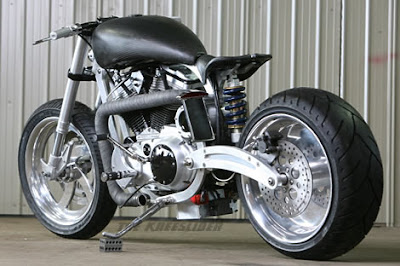
Looks pretty cool don’t ya think? When I look at this motorcycle, or others with this type of design, I think to myself, “Wow that looks just like a wasp!” You know, look at the thing! Look at how your ass is part of the main body of this machine, your back is the outer shell, the back of the wasp. Look at how the rear wheel appears like the stinger of the wasp. And while this particular motorcycle has a very boxy and unwieldy appearance to it, I've seen others whose sleek lines would cause a welter weight boxer to form an attachment to the machine. It would be something a boxer would want to fashion his body after: sleek, strong, sexy...
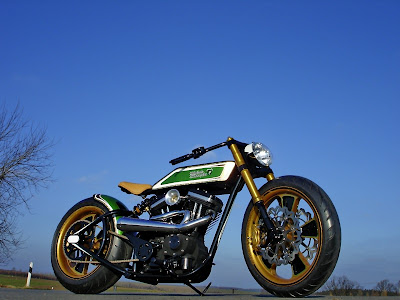
But I have to wonder, how does a frame like this work? How will it track? How will it hold up under stresses of the road? Will it twist and crumble when pushed to high velocity speeds? Will it track well around twists in the road? Will the rear end follow the front end without much effort?
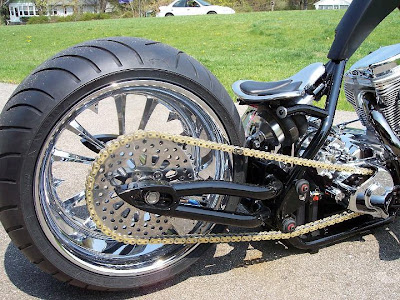
I am still looking for answers regarding this type of frame. I want to test em myself. I want one of you builders to let the public test ride these bikes, I WANT TO TEST RIDE this bike…I just want to know how come there isn’t much information out here regarding these frames? How come I can’t find any review regarding how these things track and ride? I guess I’ll just have to do more research during the day today…see what I can find. I'll bet it's out here, I just don't know what search parameters to input... sigh
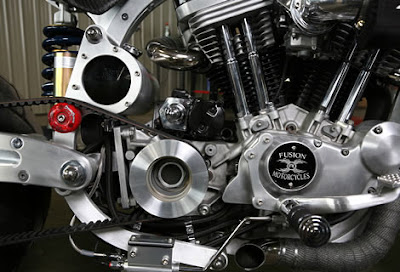
Update: The advantages of mono shock technology.
"In the good old days, motorbikes had two shock absorbers on the rear of the bike, as shown at the top of this section. As suspension evolved, the dual rear shocks were replaced with a single unit, but the question is why? The answer, it turns out, is pretty simple. In a dual-shock system, the suspension units are typically attached very close to the rear axle. This means that as the suspension compresses and expands, the shock absorber pistons are travelling in a stroke which is nearly the same as the full deflection of the swingarm. Hitting a large bump might deflect the rear axle upwards by 10cm and back, resulting in the same 10cm stroke in the shocks. Do this a lot and the shock absorber piston begins to behave like the plunger in one of those natty little cafetières or milk-frothers - it agitates the damper oil so much and so frequently that the oil begins to heat up and foam or froth. At this point it not only looks like frappuccino foam but it has about the same damping properties too, and thus loses its ability to perform as it should.
This is known as fading shock absorbers.
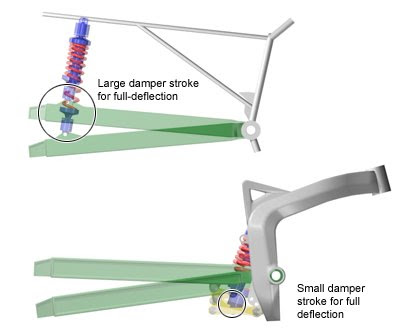
Enter the single shock absorber system mounted towards the front of the rear swingarm. The swingarm might still have a lot of travel at the axle, but basic geometry shows you that closer to the pivot, the deflection is much less. This translates into shorter shock absorber movements which in turn means less opportunity for the damper oil to froth. The ultimate evolution of this is the complex link monoshock system (also shown above), where a complex series of levers reduce the shock absorber travel even further. Typically multi-link setups like this also have some amount of variance in them so that they have a different amount of deflection in the first part of the stroke to the that in the second. This means a single shock absorber unit can respond better to changing road surfaces, soaking up the smaller bumps and shocks with ease and comfort without sacrificing the ability to respond to the occasional mountain or pothole."
Photo 1 Larry Nagel
Photos 2,3,4 from Fusion Motorcycles
Photo 2 from Iron Works Magazine.


